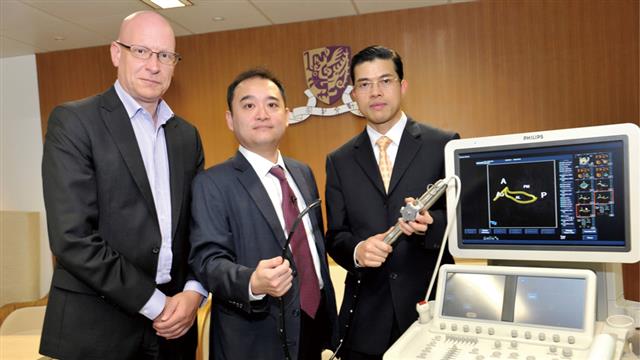A research team led by Prof. Yu Cheuk-man (right), chairman, Department of Medicine and Therapeutics; Prof. Lee Pui-wai Alex (centre), assistant professor of Division of Cardiology; and Prof. Malcolm J. Underwood (left), head of the Division of Cardiothoracic Surgery, Department of Surgery, pioneer the use of three-dimensional echocardiography to identify at-risk mitral valve prolapse patients. The research team was the first to discover that the saddle shape of the mitral annulus (ring) becomes flattened in patients with mitral valve prolapse, making the mitral valve more susceptible to wear and tear, and predisposing a patient to develop mitral valve leaflet deformation, valve tendon rupture, and eventually severe mitral regurgitation (in which blood flows back into the left atrium and lung). Symptoms of mitral regurgitation include troubled breathing, tiredness, weakness, swelling in the ankles, legs, or belly, even sudden death.
The results of the study will be useful for helping doctors to identify high-risk mitral valve prolapse patients, who should be monitored more closely by echocardiography. The findings have been published in the international cardiovascular journal Circulation (19 February 2013, Volume 127, Issue 7).
For details, please click here.



